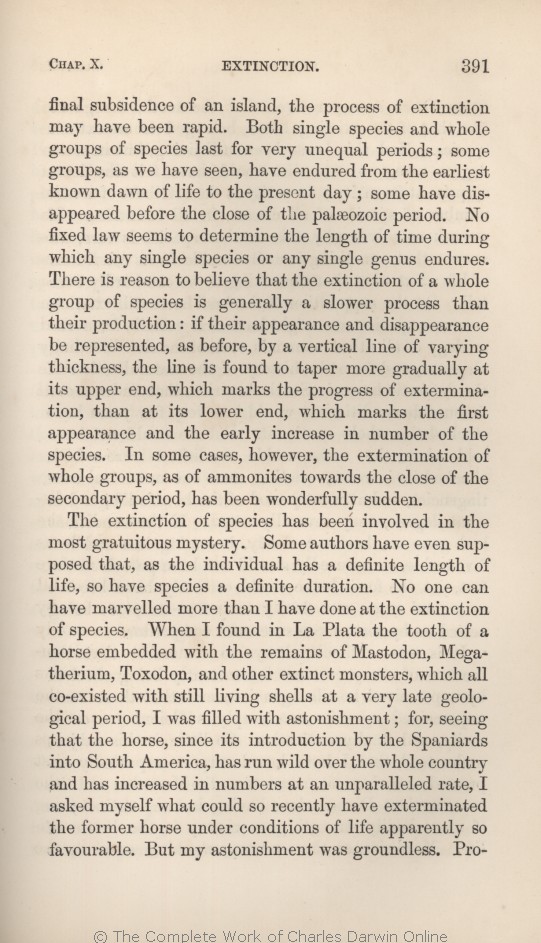final subsidence of an island, the process of extinction may have been rapid. Both single species and whole groups of species last for very unequal periods; some groups, as we have seen,
have | have 1869 1872 | | having 1859 1860 1861 1866 |
| have 1869 1872 | | having 1859 1860 1861 1866 |
| ..... 1869 1872 | | complete 1859 1860 1861 1866 |
| a whole group of species 1866 1869 1872 |
| the species of a group 1859 1860 1861 |
| their 1869 1872 | | the 1859 1860 1861 1866 |
| OMIT 1869 1872 |
| of a group of species 1859 1860 1861 |
| of a group 1866 |
| the early increase 1869 1872 |
| increase 1859 1860 1861 1866 |
| number 1869 1872 | | numbers 1859 1860 1861 1866 |
| groups, 1869 1872 | | groups 1859 1860 1861 1866 |
| ..... 1869 1872 | | of beings, 1859 1860 1861 1866 |
| ammonites 1859 1860 1861 1866 1869 | | ammonites, 1872 |
| sudden. 1859 1860 1869 1872 |
| sudden relatively to that of most other groups. 1861 1866 |
|
|
The
...| OMIT 1869 1872 |
| whole subject of the 1859 1860 1861 1866 |
| that, 1866 1869 1872 | | that 1859 1860 1861 |
| a 1859 1860 1861 1869 1872 | a 1866 |
| ..... 1869 1872 | | I think 1859 1860 1861 1866 |
| than I have done at the extinction of species. 1869 1872 |
| at the extinction of species, than I have done. 1859 1860 1861 1866 |
| for, 1866 1869 1872 | | for 1859 1860 1861 |
| OMIT 1869 1872 |
| how utterly groundless was 1859 1860 1861 1866 |
| astonishment was groundless. 1869 1872 |
| astonishment! 1859 1860 1861 1866 |
| Pro- fessor 1860 1869 | | Professor 1859 1861 1866 1872 |
|









